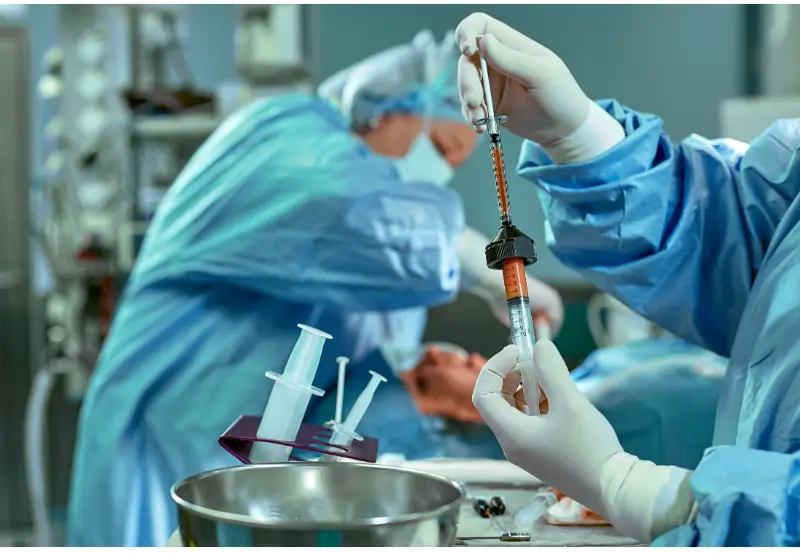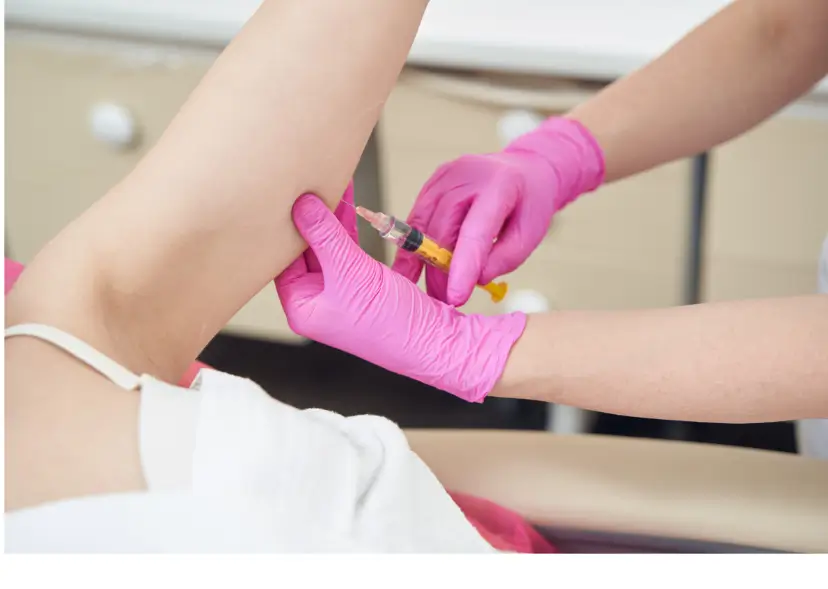Lipolysis, the process of breaking down fat into smaller molecules for energy, is vital for our body’s metabolism. The cosmetic industry has recently adopted this process to target stubborn fat deposits without surgery.
Lemon Bottle, which claims to dissolve fat through specialized injections, is gaining attention in the industry. Despite its popularity on social media, medical professionals question its effectiveness due to the lack of comprehensive clinical trials.
In this article, we’ll delve into the science behind Lemon Bottle, assess its clinical validity, and examine its place among other lipolytic treatments.
Key Takeaways
- Lemon Bottle Lipolysis is a noninvasive fat reduction treatment using natural ingredients like Lecithin and Bromelain. It aims to dissolve stubborn fat cells without surgery.
- It needs careful patient selection, avoiding those with liver or kidney disease, keloids, open wounds, or specific health issues. Ideal candidates have small, stubborn fat areas that don’t respond to diet or exercise.
- The procedure involves precise injections into the fatty area with minimal recovery time compared to traditional liposuction methods.
- Safety protocols include thorough assessments before the procedure, informed consent from patients about risks and expected outcomes, and guidelines for post-treatment care to minimize complications such as infection or tissue necrosis.
About: Medical Spa RX provides medical practices with premium products at the best prices. If you’re looking to buy Lemon Bottle wholesale for your practice, the sales representatives at Medical Spa RX can give you guidance.
Introduction to Lemon Bottle Lipolysis
Lemon Bottle Lipolysis is a cutting-edge fat-dissolving treatment. It zeroes in on rigid fat cells that seem to stick around no matter what. Thanks to its key player, lecithin, it breaks down fat, regulates cholesterol levels, and keeps atherosclerosis at bay. It uses natural ingredients like Bromelain and Lecithin. These substances target and dissolve fat cells.
Understanding the nuanced landscape of fat reduction techniques is crucial for medical professionals. Lemon Bottle Lipolysis introduces a non-invasive method using natural ingredients to target stubborn fat areas—this contrasts significantly with traditional lipolysis and liposuction methods.
Indications and Patient Selection Criteria

Some people should not get bottle lipolysis. If you have liver or kidney disease, scars that rise on your skin (keloid), open wounds, or specific other health problems, this treatment is not safe for you.
Knowing who should not undergo Lemon Bottle Lipolysis helps us focus on selecting suitable patients. This part is crucial for success.
- Start with a thorough medical evaluation. Look at the patient’s history and current health to see if they can safely have the procedure.
- Do a complete body exam. Pay attention to areas where they want fat reduced. See if these spots are suitable for treatment.
- Use evidence-based guidelines to decide if someone fits this care well. Only some people will be suitable.
- Look into any past treatments in the desired area. Previous procedures might change how you plan the current one.
- Consider skin preparation before treatment and how the patient will handle post-treatment care, including diet changes.
Injection Techniques and Dosing Considerations

Injection sites and techniques play a crucial role in Lemon Bottle Lipolysis. This process involves precise skills to ensure safety and effectiveness. Here’s how medical professionals can master this aspect:
- Ensure Proper Skin Cleansing Before Injection: Use an antiseptic to clean the treatment area thoroughly. This step prevents infection and prepares the skin for injection.
- Choose the Right Needle Size: Smaller needles minimize discomfort and allow precise filler placement.
- Mark the Injection Sites Carefully: Before injecting, mark the areas on the skin for the injections.
- Use Proper Injection Techniques: Inject slowly and steadily into the mid to deep dermis layer. Avoid overcorrection by injecting small amounts and massaging gently.
- Follow the Recommended Dosing Guidelines: Consider dosing considerations to avoid under or overtreatment. Each area of the face might require a different volume of filler.
Local anesthetics ensure patients stay comfortable during Lemon Bottle Lipolysis. Doctors use numbing agents to manage pain efficiently. This method is both safe and effective, meeting the needs of any dental surgery-related discomfort.
Expected Outcomes and Clinical Evidence

Image Courtesy of The Beauty Clinic
Setting patient outcome expectations right is critical. Lemon Bottle Lipolysis offers a noninvasive option with clear benefits over more invasive methods. The visible changes take time to surface, so educating patients about this timeframe is part of managing their expectations.
Realistic goals are essential. Patients need to understand that their outcomes will vary based on individual factors. This treatment won’t work miracles but can gradually improve targeted areas.
Longterm Results and Maintenance
Consistent follow-up appointments help monitor progress. Yet, specific guidance is needed to maintain Lemon Bottle Skin Booster before-and-after results. This hints at the need for ongoing patient education and support services to ensure extended fat reduction benefits remain within reach.
Safety Protocols and Complications
Ensuring patient safety is key before performing Lemon Bottle lipolysis. Doctors must check several boxes to guarantee a smooth and safe procedure.
- Conduct thorough assessments.
- Explain potential risks clearly.
- Obtain informed consent.
- Prepare for complications.
- Set realistic expectations.
- Follow post-treatment care guidelines.
- Schedule follow-up appointments.
Potential Complications and Adverse Events
Despite its safety claims and lack of side effects, the treatment has risks. The FDA has received reports about adverse reactions from non-approved injections. The information highlights the importance of using approved and safe methods for lipolysis treatments like Lemon Bottle Lipolysis. Despite its popularity and promises, medical professionals must be aware of these potential risks and handle them swiftly if they arise during or after treatment sessions.
Managing complications could mean giving medicine to fight infections or more treatments to fix problems. Safety is key. Doctors use their medical skills to keep patients safe and manage risks related to fat-dissolving treatments.
Conclusion
Lemonbottle Lipolysis offers medical experts a valuable tool for addressing localized fat deposits in suitable candidates. By understanding the treatment’s mechanism of action, expected outcomes, and safety protocols, medical professionals can confidently offer this procedure to eligible patients while prioritizing their safety and well-being.
As with any cosmetic intervention, ongoing education and adherence to best practices are essential for optimal results and patient satisfaction.
About: Medical Spa RX provides medical practices with premium products at the best prices. If you’re looking to order Lemon Bottle online for your practice, the sales representatives at Medical Spa RX can give you guidance.
FAQs
1. What is Lemon Bottle Lipolysis?
Lemon Bottle Lipolysis is a treatment that breaks down fat in the body, helping people lose weight.
2. How does it work?
It uses particular substances to target and dissolve fat cells safely.
3. Who can get this treatment?
People looking to reduce small areas of stubborn fat might be good candidates.
4. Is it safe?
Yes, when done by a trained expert, it’s considered safe.
5. How long does it take to see results?
Results are visible after one session, but sometimes more sessions are needed for the best outcomes.
References
Das, S. (2023). Lemon Bottle jab goes viral with claims to dissolve fat – but doctors question safety. The Guardian. https://www.theguardian.com/society/2023/dec/23/lemon-bottle-fat-dissolver-viral-but-doctors-question-safety-safety
Thomas, M. K., D’Silva, J. A., & Borole, A. J. (2018). Injection Lipolysis: A Systematic Review of Literature and Our Experience with a Combination of Phosphatidylcholine and Deoxycholate over 14 Years in 1269 Patients of Indian and South East Asian Origin. Journal of cutaneous and aesthetic surgery, 11(4), 222–228. https://doi.org/10.4103/JCAS.JCAS_117_18
Saltzman, E., Anderson, W., Apovian, C. M., Boulton, H., Chamberlain, A., Cullum-Dugan, D., Cummings, S., Hatchigian, E., Hodges, B., Keroack, C. R., Pettus, M., Thomason, P., Veglia, L., & Young, L. S. (2005). Criteria for patient selection and multidisciplinary evaluation and treatment of the weight loss surgery patient. Obesity Research, 13(2), 234–243. https://doi.org/10.1038/oby.2005.32





















